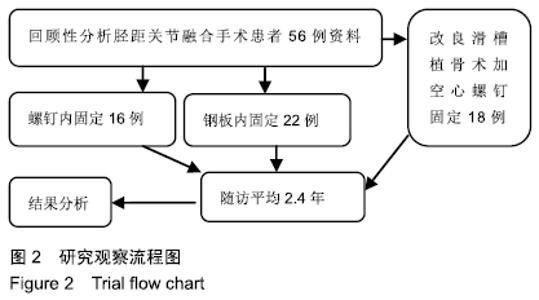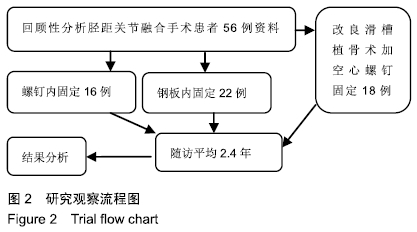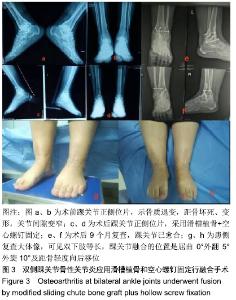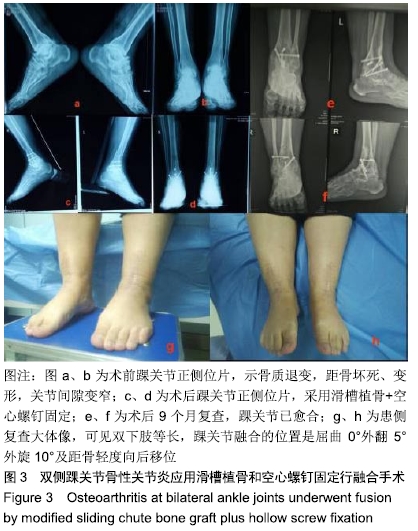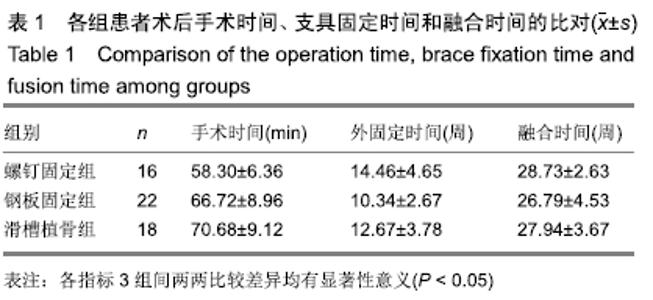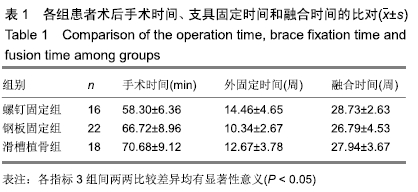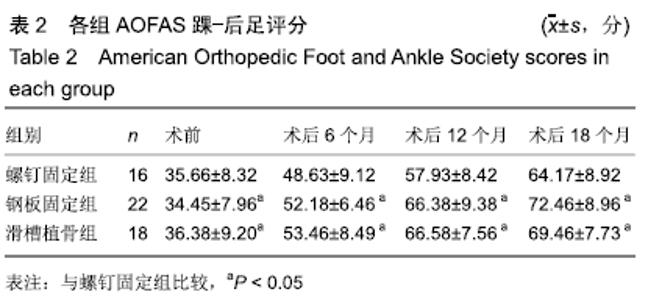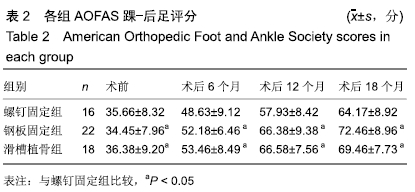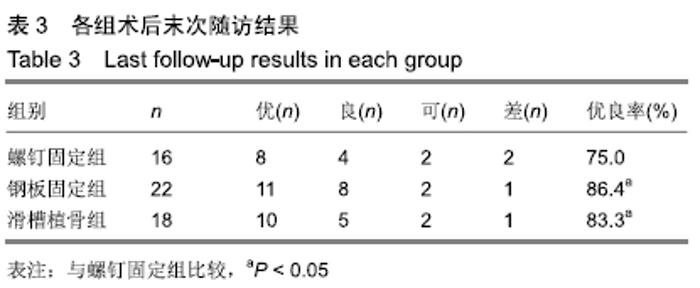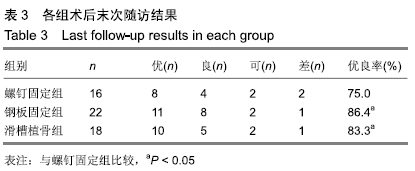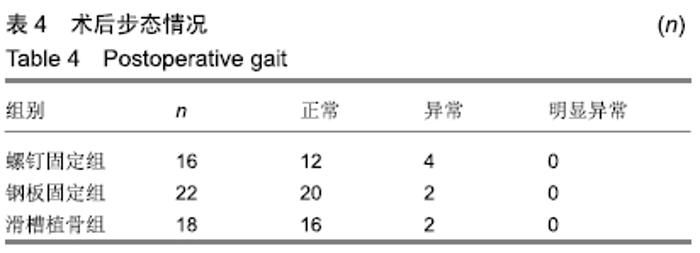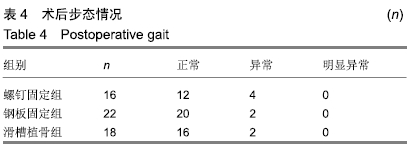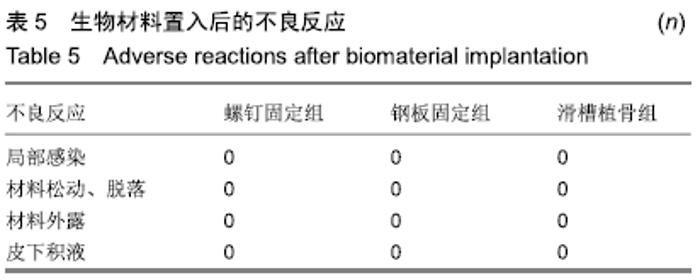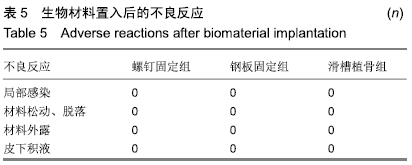| [1] |
Hu Kai, Qiao Xiaohong, Zhang Yonghong, Wang Dong, Qin Sihe.
Treatment of displaced intra-articular calcaneal fractures with cannulated screws and plates: a meta-analysis of 15 randomized controlled trials
[J]. Chinese Journal of Tissue Engineering Research, 2021, 25(9): 1465-1470.
|
| [2] |
Yao Rubin, Wang Shiyong, Yang Kaishun.
Minimally invasive transforaminal lumbar interbody fusion for treatment of single-segment lumbar spinal stenosis improves lumbar-pelvic balance
[J]. Chinese Journal of Tissue Engineering Research, 2021, 25(9): 1387-1392.
|
| [3] |
Zhang Shangpu, Ju Xiaodong, Song Hengyi, Dong Zhi, Wang Chen, Sun Guodong.
Arthroscopic suture bridge technique with suture anchor in the treatment of acromioclavicular dislocation
[J]. Chinese Journal of Tissue Engineering Research, 2021, 25(9): 1417-1422.
|
| [4] |
Liang Yan, Zhao Yongfei, Xu Shuai, Zhu Zhenqi, Wang Kaifeng, Liu Haiying, Mao Keya.
Imaging evaluation of short-segment fixation and fusion for degenerative lumbar scoliosis assisted by highly selective nerve root block
[J]. Chinese Journal of Tissue Engineering Research, 2021, 25(9): 1423-1427.
|
| [5] |
Jiang Hongying, Zhu Liang, Yu Xi, Huang Jing, Xiang Xiaona, Lan Zhengyan, He Hongchen.
Effect of platelet-rich plasma on pressure ulcers after spinal cord injury
[J]. Chinese Journal of Tissue Engineering Research, 2021, 25(8): 1149-1153.
|
| [6] |
Zeng Zhen, Hu Jingwei, Li Xuan, Tang Linmei, Huang Zhiqiang, Li Mingxing.
Quantitative analysis of renal blood flow perfusion using contrast-enhanced ultrasound in rats with hemorrhagic shock during resuscitation
[J]. Chinese Journal of Tissue Engineering Research, 2021, 25(8): 1201-1206.
|
| [7] |
Li Cai, Zhao Ting, Tan Ge, Zheng Yulin, Zhang Ruonan, Wu Yan, Tang Junming.
Platelet-derived growth factor-BB promotes proliferation, differentiation and migration of skeletal muscle myoblast
[J]. Chinese Journal of Tissue Engineering Research, 2021, 25(7): 1050-1055.
|
| [8] |
Hou Guangyuan, Zhang Jixue, Zhang Zhijun, Meng Xianghui, Duan Wen, Gao Weilu.
Bone cement pedicle screw fixation and fusion in the treatment of degenerative spinal disease with osteoporosis: one-year follow-up
[J]. Chinese Journal of Tissue Engineering Research, 2021, 25(6): 878-883.
|
| [9] |
He Li, Tian Wei, Xu Song, Zhao Xiaoyu, Miao Jun, Jia Jian.
Factors influencing the efficacy of lumbopelvic internal fixation in the treatment of traumatic spinopelvic dissociation
[J]. Chinese Journal of Tissue Engineering Research, 2021, 25(6): 884-889.
|
| [10] |
Yang Weiqiang, Ding Tong, Yang Weike, Jiang Zhengang.
Combined variable stress plate internal fixation affects changes of bone histiocyte function and bone mineral density at the fractured end of goat femur
[J]. Chinese Journal of Tissue Engineering Research, 2021, 25(6): 890-894.
|
| [11] |
Kong Lingbao, Lü Xin.
Effect of implant selection and approach on support in the operation of posterolateral tibial plateau fractures
[J]. Chinese Journal of Tissue Engineering Research, 2021, 25(6): 942-947.
|
| [12] |
He Xiangzhong, Chen Haiyun, Liu Jun, Lü Yang, Pan Jianke, Yang Wenbin, He Jingwen, Huang Junhan.
Platelet-rich plasma combined with microfracture versus microfracture in the treatment of knee cartilage lesions: a meta-analysis
[J]. Chinese Journal of Tissue Engineering Research, 2021, 25(6): 964-969.
|
| [13] |
Zhong Hehe, Sun Pengpeng, Sang Peng, Wu Shuhong, Liu Yi.
Evaluation of knee stability after simulated reconstruction of the core ligament of the posterolateral complex
[J]. Chinese Journal of Tissue Engineering Research, 2021, 25(6): 821-825.
|
| [14] |
Xu Yulin, Shen Shi, Zhuo Naiqiang, Yang Huilin, Yang Chao, Li Yang, Zhao Heng, Zhao Lu.
Biomechanical comparison of three different plate fixation methods for acetabular posterior column fractures in standing and sitting positions
[J]. Chinese Journal of Tissue Engineering Research, 2021, 25(6): 826-830.
|
| [15] |
Liu Zhengpeng, Wang Yahui, Zhang Yilong, Ming Ying, Sun Zhijie, Sun He.
Application of 3D printed interbody fusion cage for cervical spondylosis of spinal cord type: half-year follow-up of recovery of cervical curvature and intervertebral height
[J]. Chinese Journal of Tissue Engineering Research, 2021, 25(6): 849-853.
|
